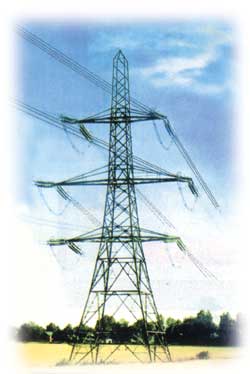 There are a few things that distinguish human beings from non-human ones. Humans, for instance, have the well-known tendency to sprout fur under their armpits, whereas other lesser mammals whose armpits I have personally inspected while researching this article, don't. Humans are also the only species aside from the Common Himalayan Blue-throated Bush Chat that can compose music and sing. How the genes responsible for music evolved in early humans is still a matter of conjecture in the scientific community at large, but the latest theory is that our primate ancestors made rudimentary attempts at singing when, after a hard day of hunting, gathering and stalking mammoths in the peat bogs, they started taking the first pre-historic showers. This is why, to this day, my significant other sings popular Nepali folks songs while in the tub. In fact, she is doing so even as we speak.
There are a few things that distinguish human beings from non-human ones. Humans, for instance, have the well-known tendency to sprout fur under their armpits, whereas other lesser mammals whose armpits I have personally inspected while researching this article, don't. Humans are also the only species aside from the Common Himalayan Blue-throated Bush Chat that can compose music and sing. How the genes responsible for music evolved in early humans is still a matter of conjecture in the scientific community at large, but the latest theory is that our primate ancestors made rudimentary attempts at singing when, after a hard day of hunting, gathering and stalking mammoths in the peat bogs, they started taking the first pre-historic showers. This is why, to this day, my significant other sings popular Nepali folks songs while in the tub. In fact, she is doing so even as we speak. Nepali folk songs, as those of us who have made multiple visits to Bhojan Griha know, are a fascinating blend of rhythm, melody and poetic lyrics. It is the harmony of these three important musical elements that make Nepali folk so irresistible. There is not a trekker who does not leave this country humming Resham phiriri while being frisked amidst heightened security at the departure gate. I have often wondered at the popularity of that particular song, and have come to the conclusion that it is the lyrics that make it the hot favourite. The words are imbued with deep symbolism and relevance. Take the second stanza of the chorus:
Ek nale banduk. Dui nale banduk. Mrigalai take ko.
Mrigalai maile take ko hoina, maya lai dake ko.
Translation:
One-barrel gun, two-barrel gun, aiming at a deer.
I'm not aiming at no deer.
I'm aiming at you, my dear.
These are poignant words. And the juxtaposition of an emerging gun-culture and latent violence with words of endearment lend the song an ominous sense of foreboding. The uncertainties of love are symbolic in a land where life itself has become uncertain.
Let's take another popular Nepali song from yesteryear where the lyrics evoke the nostalgia for a time when the world was young, love was sweet, while through the medium of music the Nepali public gets a lesson in horticulture and the vital significance of the insect kingdom in cross-pollination.
Ma mahuri hun Radha,
Timi aanp ko manjari hau.
My good friend Salil assisted me in translating it thus:
I am a bee, Radha,
You are a mango tree.
I see some dancing in the aisles, so let me present another popular folk tune, this one by Sambhujit Banskota:
Rato tika nidharma, talakka talkiyo
Chhati bhitra mayako, aago salkiyo.
Eh, bijuliko tar, tar, tar.
Phursata bhaye, eh hajur, bhetaun sanibar.
Red dot on your forehead shining, brightly
Flame of love burning in my chest, fiercely.
Hey, electricity wire, wire, wire.
Let's meet on Saturday if you're not tied up already.
Here, the lyricist has cleverly shown us the connection between a high-voltage transmission line and thermal energy. Then, subtly, he drives home the important message that our nation's future rests in the prudent harnessing of our hydropower potential so that young citizens will have the leisure to rendezvous on weekends.
Hydropower is a recurring theme in Nepali folk songs, as we can see in this next one which is the lament of a paan-chewing tehnician working in the Middle Marsyangdi Project whose responsibility it is to power the nation day and night:
Paan ko pat
Maya timilai samjhanchhu din ko raat
Marsyangdi sa la la.
Darling betel leaf,
I think of you day and night
Like the lean season flow of the Marsyangdi.
And it is when the river goes dry because all the water has been diverted to the turbines that there is hint of trouble in paradise and the first signs of psychosis:
Dhunge bagara, dajai, dhunge bagara
Maya chhadaichha halla nagara.
Rocky bugger, brother, rocky bugger
OK, OK, I love you, so shut up already.



